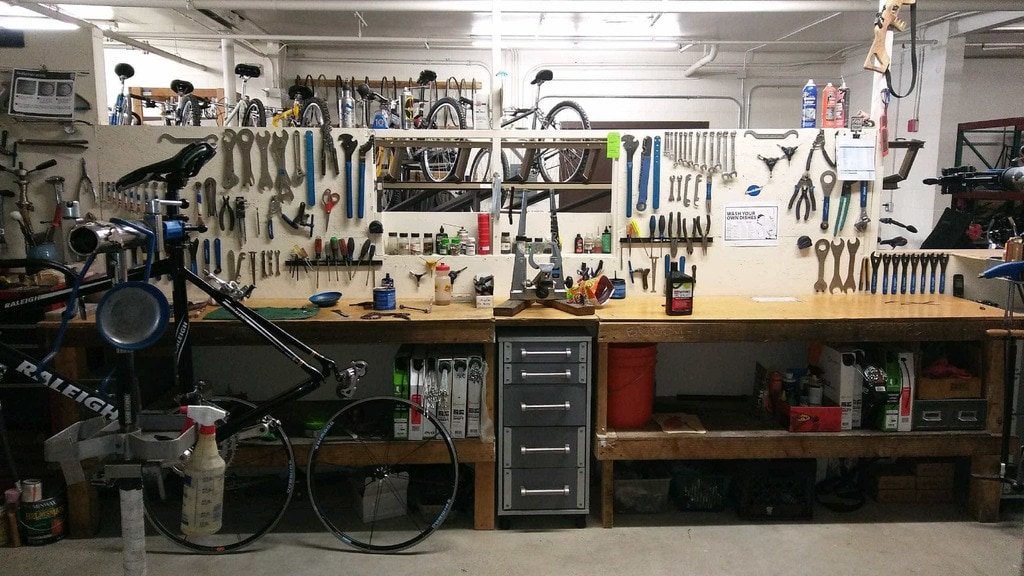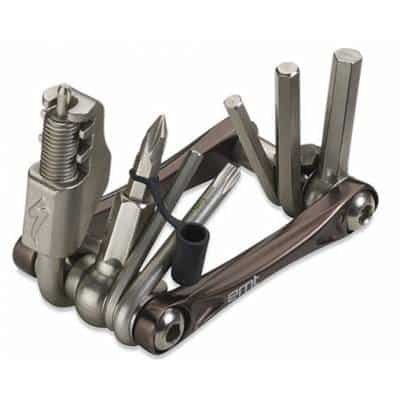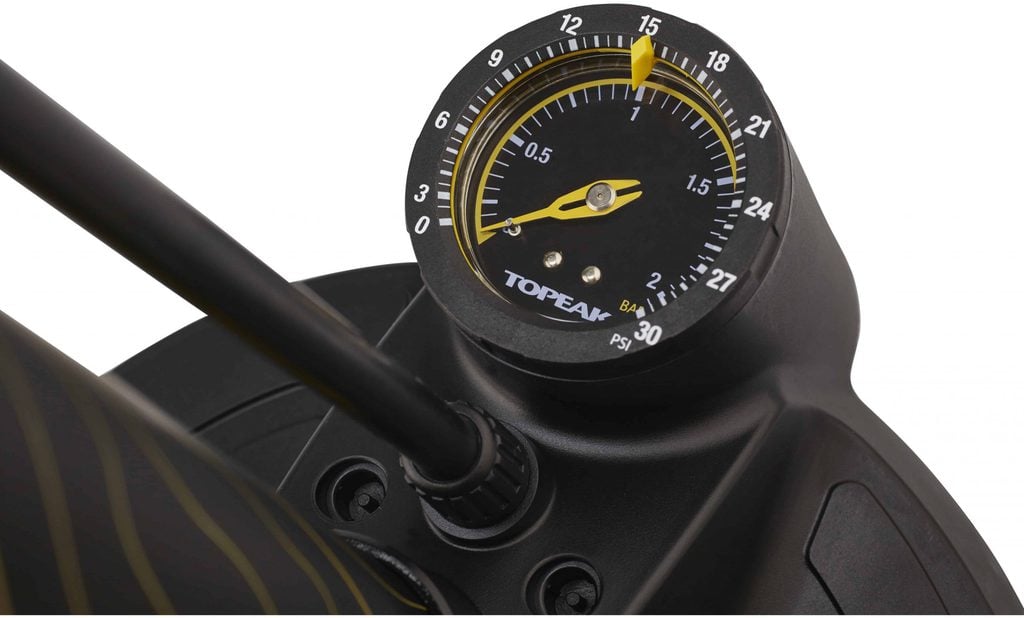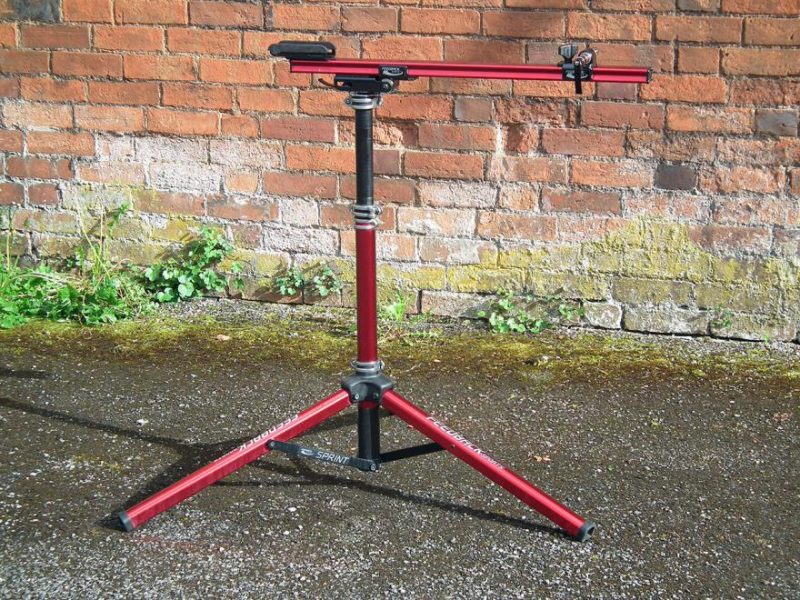9 Things to Check Before Each Bike Ride
Two cups of coffee down, you’ve eaten, gotten dressed, shoes and helmet are on, GPS’s on the bike, sunglasses on your face, water in your bottle, a few gels and your cell phone in your pocket. You’re ready to go.
You grab your bike, but wait, what’s this?
Your rear tire looks low?
Is it flat?
Man, what a drag! Now you’re going to be late for that group ride. They have a 5-minute wait policy, and then they’ll leave without you.
Don’t let poor planning wreck your cycling plans. Take a few minutes to check over your bike before you head out, so you don’t end up in the same situation.
What should you be checking? I’m glad you asked.
Tire Pressure
You pumped up your tires a few days ago, but haven’t ridden since. Optimal pressure doesn’t last very long, it constantly changes with temperature and atmospheric pressure. You could’ve picked up a slow leak on your last outing, too.
In short, check your tire pressure every time you ride, but don’t wait until the last minute.
How much air you need depends on the terrain, tire width, rider weight, and type of tire. If you’re running tubeless, this calculator may come in handy. Leave new tubeless setups overnight to check for leaks before taking them on a ride.
Latex inner tubes are the most sensitive to pressure fluctuations, you’ll have to top up just before your ride and not the night before.
Read More : The 7 Factors that Affect Your Bike Tire Pressure
Brakes
Most of us ride and put our bikes away without a second thought. Everything was working fine when you rolled in, so what could have gone wrong since?
I understand the logic, but since brakes are vital for our personal security, better safe than sorry, right?
Rim brake pads have clear wear lines, disc brakes, not so easy. When was the last time you checked or replaced yours?
Turn the wheels and try the brakes. Do you hear any rubbing?
If you have a hydraulic system, is the braking sensation solid or mushy? A mushy feeling with no stopping power means you may need to take more important steps than just changing the pads.
QR and/or Thru-Axles
Quick release skewers are standard material on rim brake bicycles. They function with a lever that opens and closes against a small spring, one on each end, that creates tension.
Check your QR lever. It should be firmly closed yet not require a death grip to open it. Verify it’s properly in the closed position and not just tightened down in the open position.
Modern bikes use thru-axles, but not all, so your bike could have disc brakes and a QR skewer. Are your thru-axles securely tightened down to the manufacturer’s specifications in the opposite fork or drop out?
If they require a separate tool to remove the wheel, do you have it in your saddlebag?
Headset
Does your bike make a rattling when you pick it up by the handlebars and drop it a few inches from the ground?
If so, this is typical of a loose headset and something that needs to be addressed. If you ride your bike over an extended period with a loose headset, it can permanently damage your bike frame.
Another way to check for a loose headset is to hold both brakes firmly and rock the bike back and forth in place. Do you feel play in the headset?
It may need to be tightened. Loosen the stem pinch bolts on your steer tube before you tighten the compression bolt (top cap). How much it needs varies, but don’t overdo it, and re-tighten those stem bolts too.
Electronic Shifting Battery Level
Di2 works so well you forget about it. But that’s no reason not to check your battery level regularly, especially before a big event or competition. If you get caught out and someone else has Di2, unplug their cable and put it into your derailleur to shift to a manageable gear, a nifty trick.
SRAM eTap functions with individual batteries so you can swap out those of the front and rear derailleur in a pinch when you need to get you home. Remove your batteries for travel or when your bike is on or in the car as movement activates internal accelerometers which drain them as if you were riding.
Read More : SRAM Etap vs Shimano Di2 – Which is Better?
Well-Lubed Chain
Without a chain, you aren’t going anywhere. While it’s the least expensive part of your drivetrain, they aren’t cheap, and you’d probably rather put that money into another tidbit with a more cool factor.
But don’t ignore it. Use a dedicated chain lube to reduce friction and keep your chain in top shape as long as possible.
All lubes aren’t the same, and the one you choose should correspond with where you ride and the season (wet vs dry). Silicone sprays like household WD40 are not strong enough to stand alone.
Don’t overload it either, more isn’t better. A goopy chain attracts dust and road debris, which creates even more wear. Distribute a light layer over the length of the chain the night before and remove any excess.
Read More : When Should I Replace My Bike Chain?
Wheels and Spokes
Have you checked your wheels and tires recently?
You’ve been puncture-free for a while, but that’s the ideal time to do it. Look for fragments stuck in the rubber and inspect your tire sidewalls and bead for damage to avoid problems on the road.
How much tread is left?
Are your tires squared off at the top?
If so, it’s time for new ones.
Do your wheels spin true or are there a wobble?
A wobble indicates a tension problem or a broken spoke where it’s happening. Give each spoke a wiggle to check. One loose or broken spoke is easy to take care of, two or more may be a sign of a bigger problem. Check your spokes before each ride so you don’t miss out on that upcoming group ride.
Saddle Bag Contents
A phone call to a friend or family can get a rider out of a sticky situation, but it’s best to be self-sufficient when you’re out on your bike. A saddlebag is a convenient way to take the essentials with you. Check the state of its contents periodically to verify that everything is in good working order.
If your spare has been in there for an age, inflate and leave it overnight to make sure the rubber and valve are still airtight. I keep a glueless patch kit in mine, with tire levers, a multi-tool, and a CO2 cartridge. Some carry a chain link too. If you need a temporary tire boot, a bill or used gel packet will do the job.
I carry a hand pump, so the CO2 cartridge is back up. If you ride tubeless, a blast of forced air will serve you better than a pump alone. Tubeless riders should carry an inner tube as well because you just never know.
Read More : The 10 Essentials to Carry In Your Bicycle Saddle Bag
Other Adjustments
We’ve checked most of the bike, but what about your derailleurs?
Are the front and rear shifting correctly? Shift to the large chainring in your cassette’s lowest and highest gear to be sure.
Give your saddle a good twist to size up the tension of your seatpost clamp and frame binder bolt.
A torque wrench is an essential investment for every cyclist. Use it to top off your handlebar, stem, and seat post binder bolts safely. The manufacturer’s recommended torque should be visible on or near each one. Before every ride would be a bit of overkill, but every few months is a good idea to keep your rides fun and safe.
Author Recommended Reads




